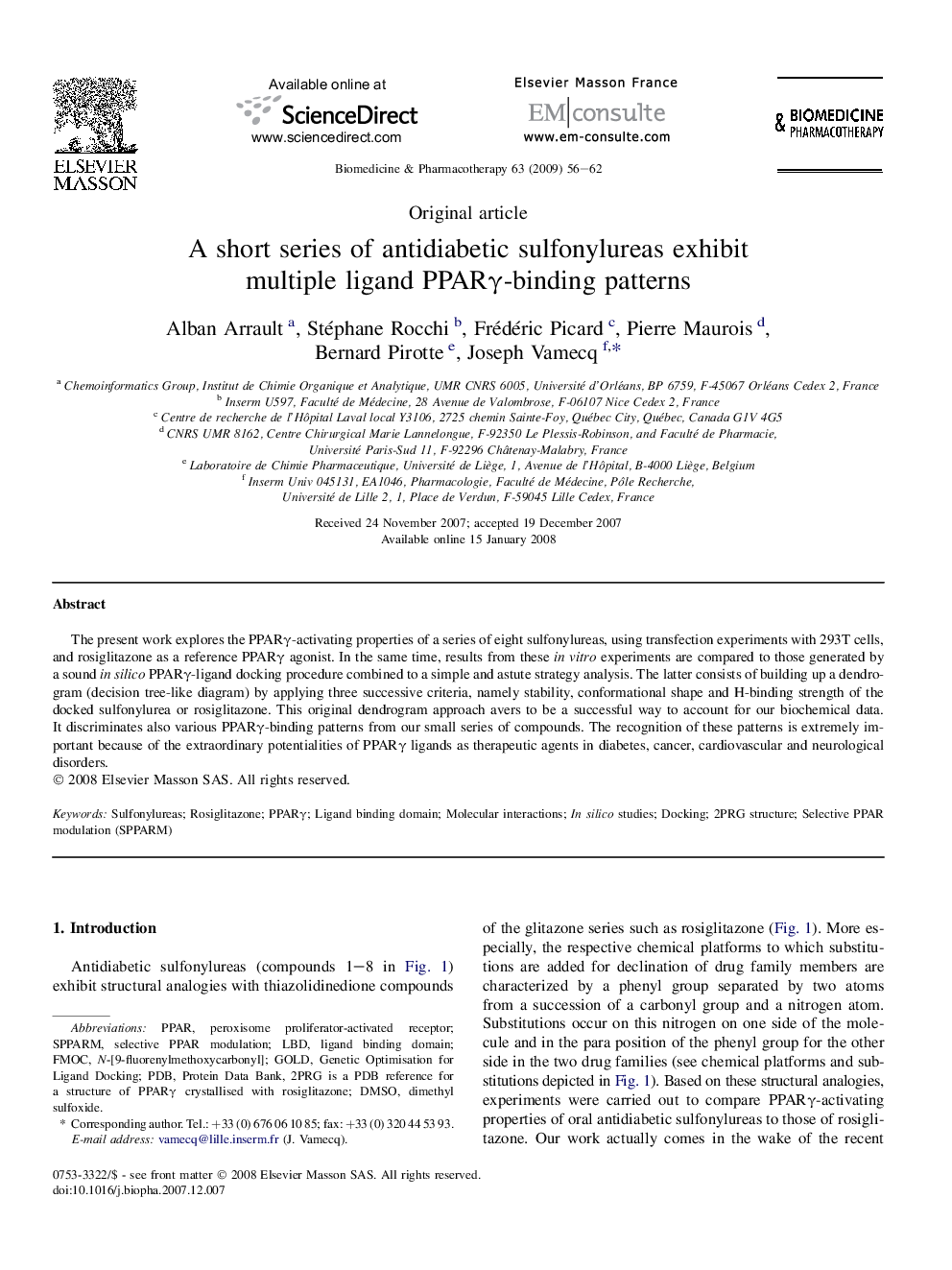| Article ID | Journal | Published Year | Pages | File Type |
|---|---|---|---|---|
| 2525410 | Biomedicine & Pharmacotherapy | 2009 | 7 Pages |
The present work explores the PPARγ-activating properties of a series of eight sulfonylureas, using transfection experiments with 293T cells, and rosiglitazone as a reference PPARγ agonist. In the same time, results from these in vitro experiments are compared to those generated by a sound in silico PPARγ-ligand docking procedure combined to a simple and astute strategy analysis. The latter consists of building up a dendrogram (decision tree-like diagram) by applying three successive criteria, namely stability, conformational shape and H-binding strength of the docked sulfonylurea or rosiglitazone. This original dendrogram approach avers to be a successful way to account for our biochemical data. It discriminates also various PPARγ-binding patterns from our small series of compounds. The recognition of these patterns is extremely important because of the extraordinary potentialities of PPARγ ligands as therapeutic agents in diabetes, cancer, cardiovascular and neurological disorders.
